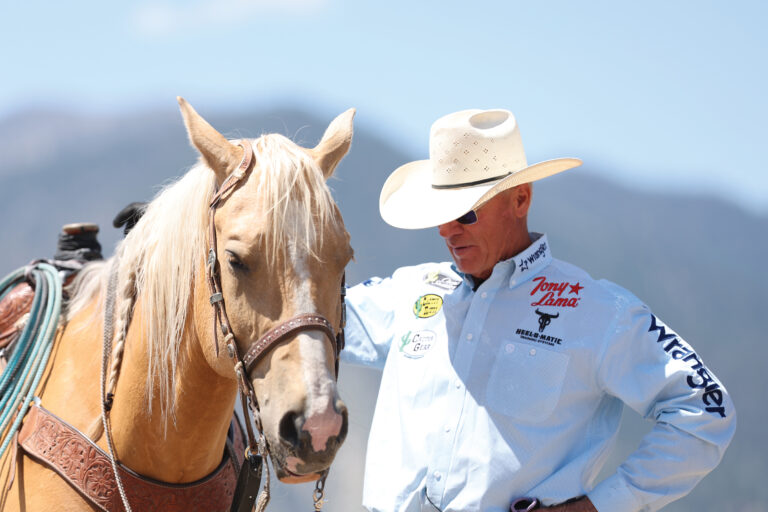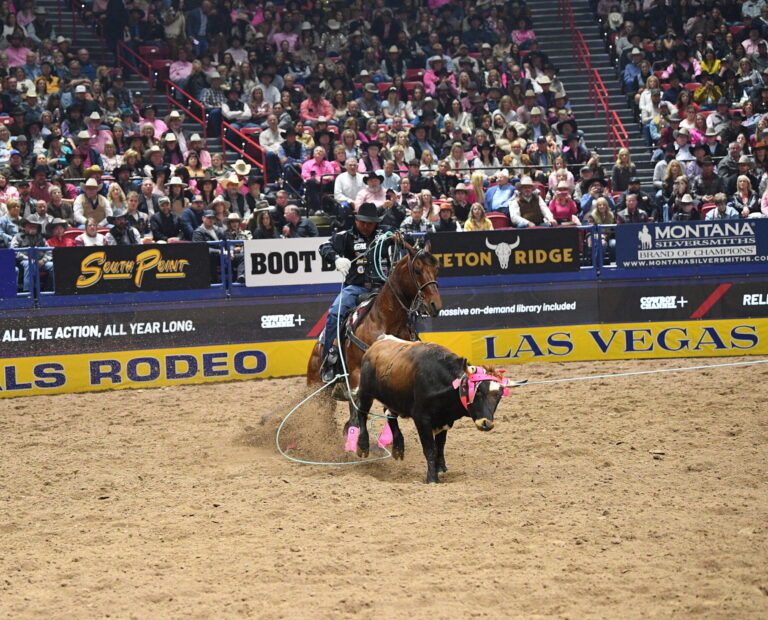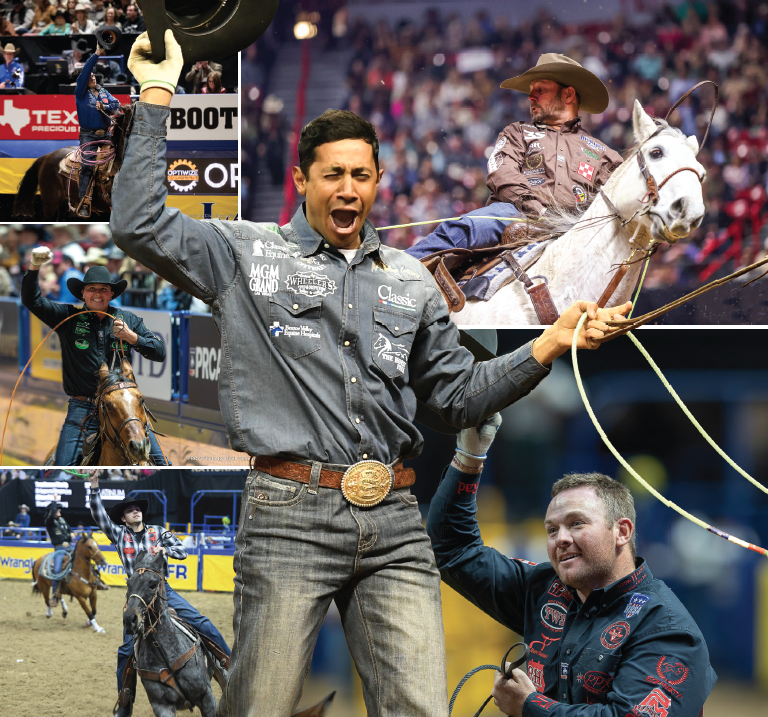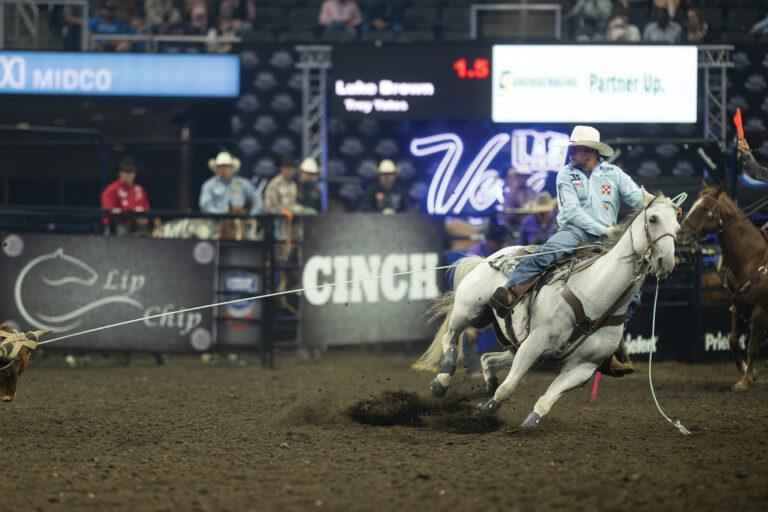
Rhen Richard wants his head horses framed up and reacting. Here’s how he uses a breakaway session to instill fundamentals in a high-powered prospect.
Our practice sessions at A&C Racing and Roping are pretty focused on the head side. In fact, most of the time we’re roping, we don’t have a heeler. We work a lot on getting our horses’ frames consistent, keeping them responsive. Each practice is targeted to each horse and, in these photos, I’m focusing on a future rodeo horse—not a show horse—that wants to be free and pushy. I use a breakaway to get him focusing on his position to the steer and his frame going down the pen.
Theory

This whole session, I was making sure this horse was coming back to me. I’m trying to help him find the right frame, with his shoulders up and his butt driving. I’m making sure when I pick up and put my right leg on him that his hip is right under him. I use my left hand and left rein to shape his neck, shoulders and body to where I want it. If he loses his drive, it’s easy to get out of whack. With his butt under him, I can manually find the frame with my left hand. I don’t want him to find a frame that makes it hard for him to be athletic. And I don’t want to have to do this in competition.
Throw

I know this horse. I want him to know when I put my money up and I have my hand down going to the cow. I’ve taught him how to drive without me helping him. So, as far as choosing when to throw, I wasn’t worrying about it. I would throw at the bottom of the arena on every run that day. When I push this horse to the cow and I pick up, he finds the frame and he’s soft coming back to me, and that’s on his mind. He’ll be running no matter what—I don’t have to push that horse. He naturally wants to run to the cow and be free.
Bridle reins

Early in the process, I’m making sure he’s doing it right—so I’m handling him quite a bit. When he figures it out, then I add the speed and touch on it. I put it on him lightly, and his first reaction is to find the frame and be soft. If he doesn’t, I add more pressure and more leg and make sure he responds. When I put my money up, and things are going fast, his reaction is to come back and bring his shoulders up.
This horse wants to be pushy, so I pick up and across. When I put the left rein on him, I pull his left shoulder up and I add the right leg to get that frame. That’s the hard part: when money is on the line, I want that to be automatic so I can worry about me. It’s so critical to really hammer this in.
Rate?

That horse is going to be a rodeo horse—he’s not a show horse. I want him tightening his stride more than rating. I don’t want a jake-brake. I want him to run through my throw but have his stride tightened. I don’t want my rodeo horses rating off my seat. I won’t sit down until it goes on the horns. I want him to rate my swing and my position. I don’t want him just backing out of it—I want him tightening his stride and melting.
Stop?

That horse isn’t going to just drag his butt. He’s more numb-mouthed. Instead of stopping him, I’ll let the steer pull on me to where he learns to shift his weight to his hind end and feel his power pulling back on the steer. The more I stop him, the more he gets bracing and hits on his front end. TRJ
WATCH: New Rhen Richard videos dropping this month at Roping.com









